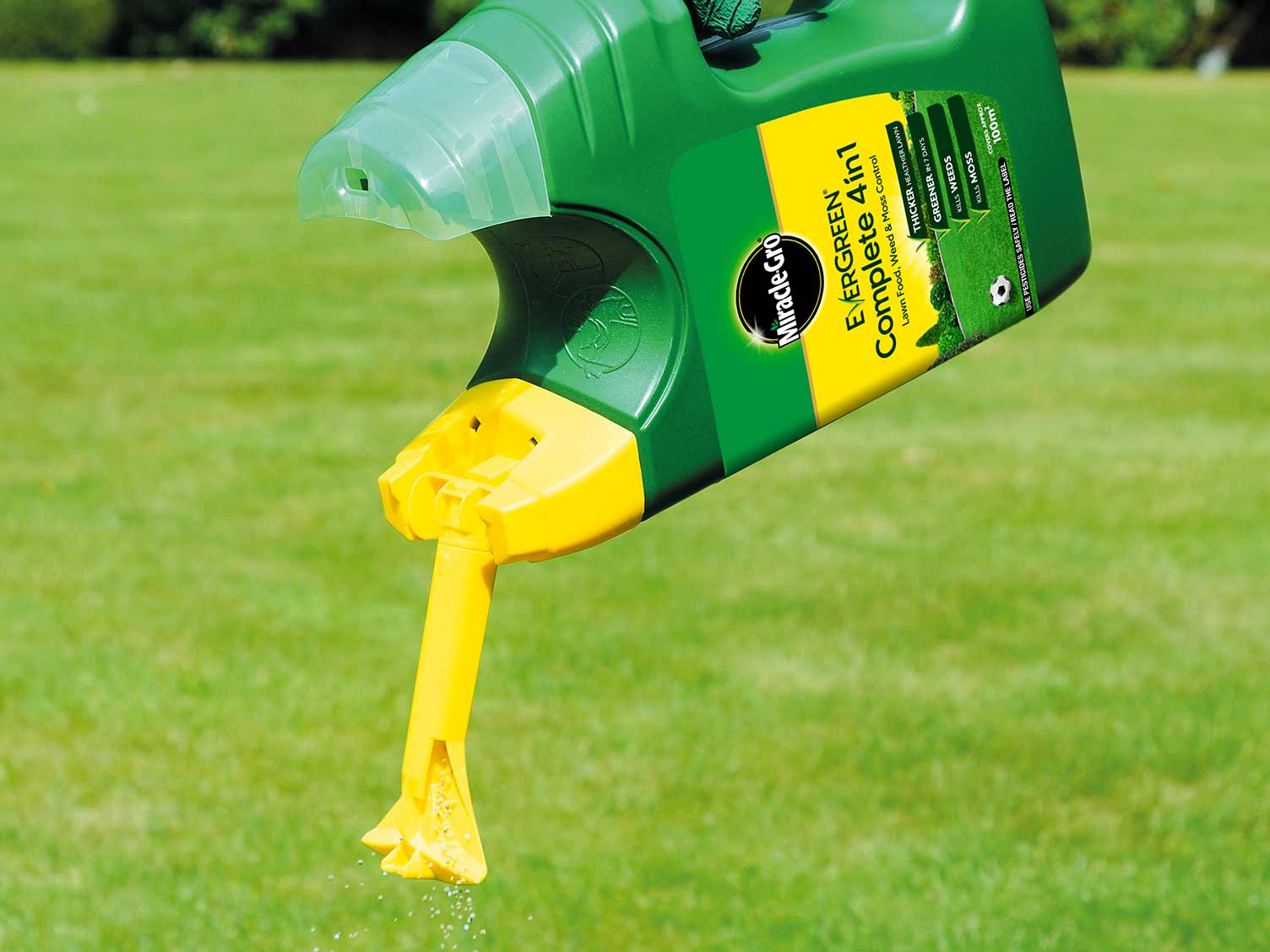
1. Remove weeds, thatch and moss
These pesky items can prevent growth by blocking air and nutrients from getting to the roots.
Weeds
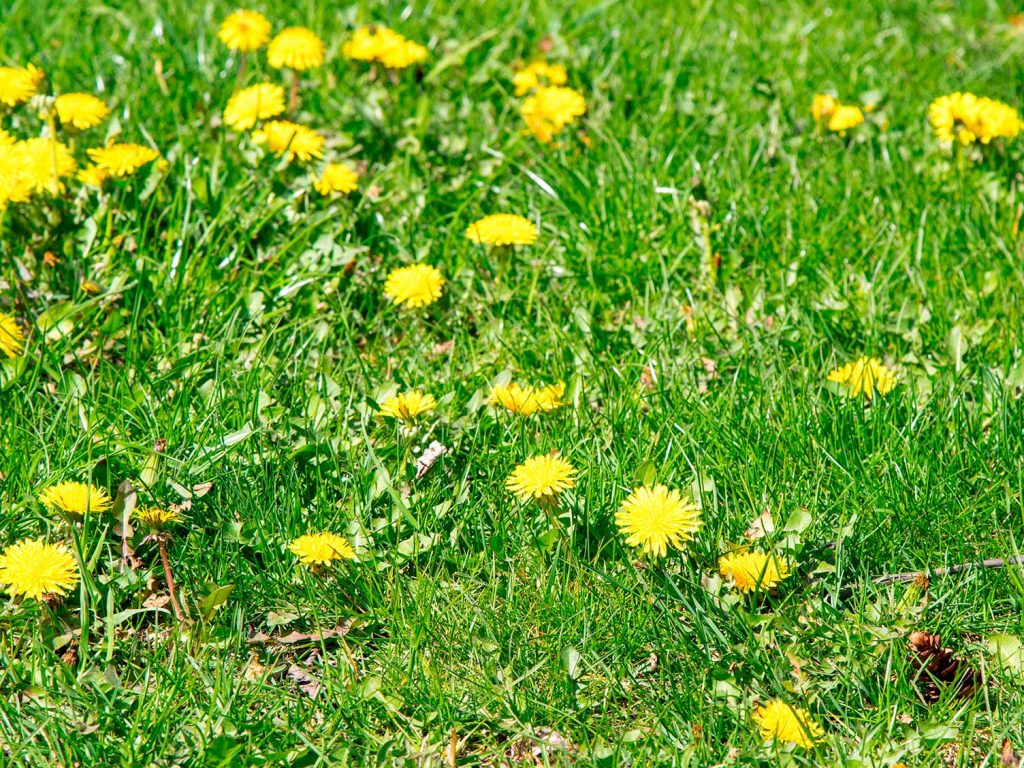
These can appear anywhere as there are so many ways they can be brought into the garden, by birds flying over, pets and other animals roaming across the grass or even on your clothing and footwear.
Lawn weeds can grow as either seed heads or flowers, with a wide variety of types that are common in lawns.
The easiest option is to pull out the whole weed, roots included. This can be done by hand or using a tool, however if there is a large quantity try spraying the weeds directly with a low toxicity herbicide.
Thatch
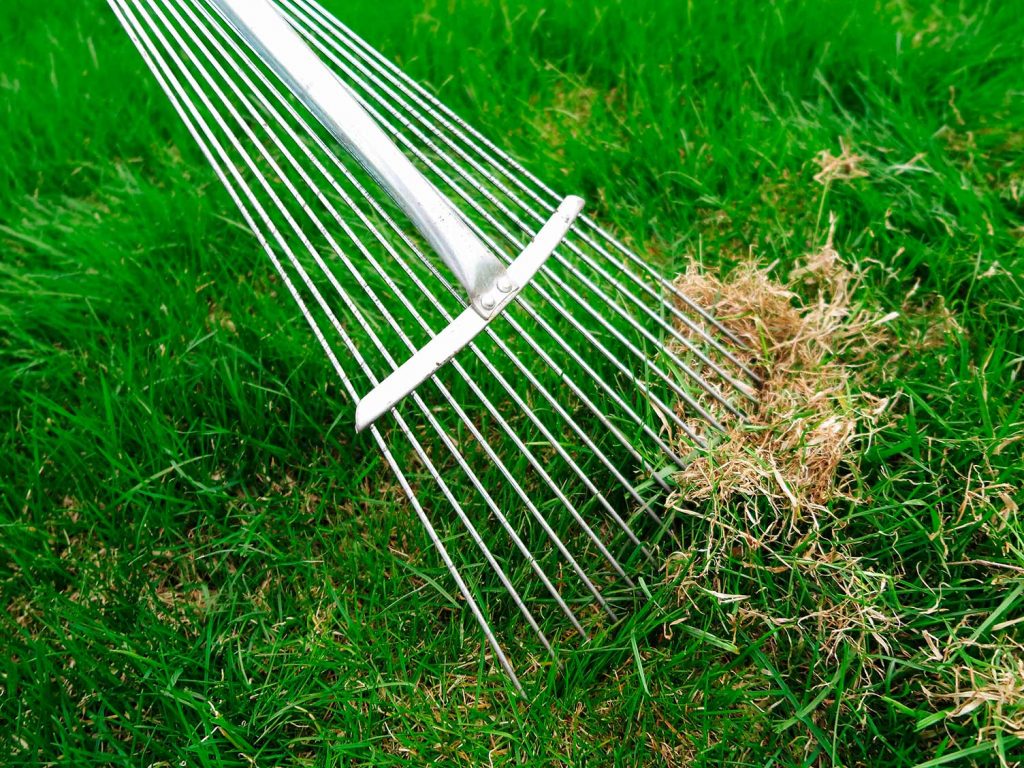
This is a layer of organic matter that can build up between the leaves and the soil, consisting of dead leaves, grass and root stems.
The build up creates a blockage, preventing essential moisture and nutrients from penetrating the soil and down to the roots.
These areas are easy to identify as the ground itself will have a spongy feel and the lack of nutrients will cause dull, dead patches on the lawn.
The best solution to remove thatch is with a process called scarification, which is the process of raking and removing mulch from the lawn. There are a variety of tools available, including a lawn scarifier, that will assist with this process.
Moss
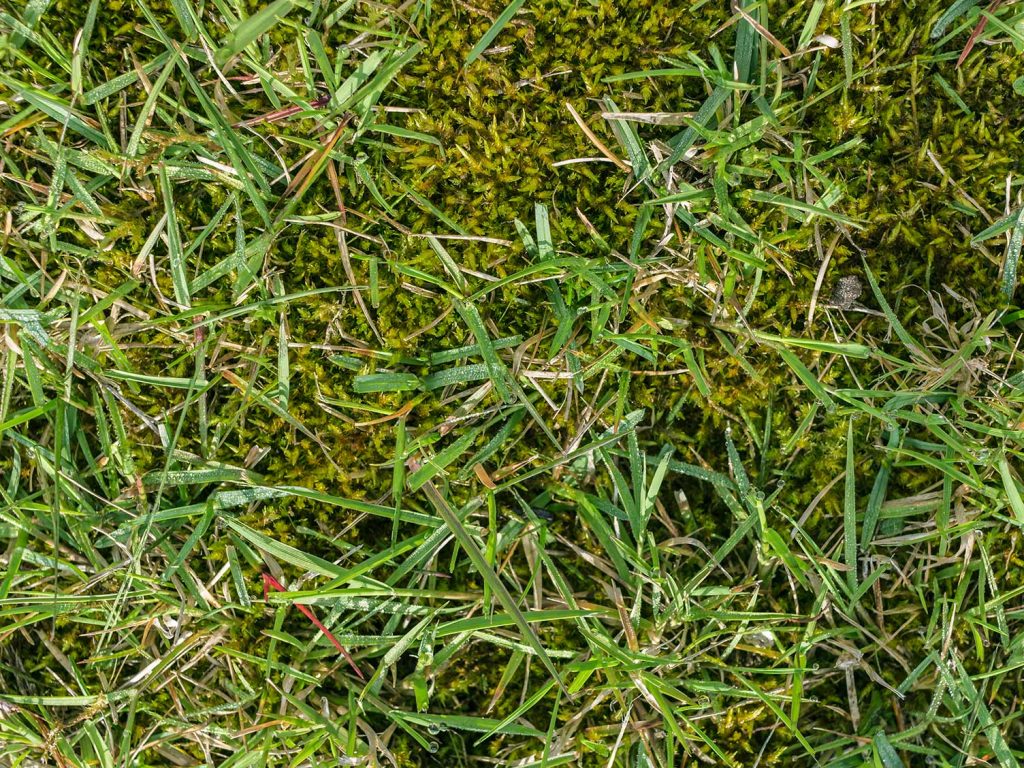
Mosses are non flowering plants that can cause the worst of lawn problems. They thrive in areas that have excess moisture, shade and low quality turf.
If left undiscovered or untreated the level of moss will increase, reducing the grasses ability to grow. The initial conditions that allow for it to develop include:
- Shade
- Clay within the soil
- Poor drainage
- High quantities of thatch
- Drought
In order to remove the moss, the cause for the problem must be identified and reduced. It can then be monitored and maintained with feeding and scarifying.
2. Improve drainage
Lawns with poor drainage often become waterlogged for hours, or even days. This can lead to other complications for your lawns health if drainage is not improved.
The two most common causes for water build up are the soils ability to absorb the water and the landscaping of the garden.
Soil permeability
High levels of clay in the soil, thick areas of thatch, soil compaction and layers of roots can all contribute to prevention of water absorption.
Depending on the extent of the problem, aeration can improve the flow of water and air to reduce surface build up.
Alternatively, changing the nature of your soil can assist in getting the desired drainage levels. This can be done either by using suitable plants for the existing soil type, or gradually adjusting the soil with organic materials.
Garden topography
The shape of your garden should naturally drive water away from the house with a shallow, level slope. Any dips can allow water to pool in one spot, which can damage the grass and roots. It is important that you try to prevent waterlogging in your garden.
When this occurs fitting gutters and drains to direct excess rainfall away from the lawn, adding a selection of wet plants that thrive in water or re-shaping the area and adjusting the gradient are effective ways to improve the drainage.
3. Aerate
This process allows better penetration of air and water to the root zone of the grass, which is essential for gaining the right nutrients to grow. It is a good way to manage lawns that are affected by drought or water logging.
Aeration is performed by creating small holes in the soil at certain intervals and depths, and can be done using a garden fork or specially made tools and machines – even aerating shoes are available!
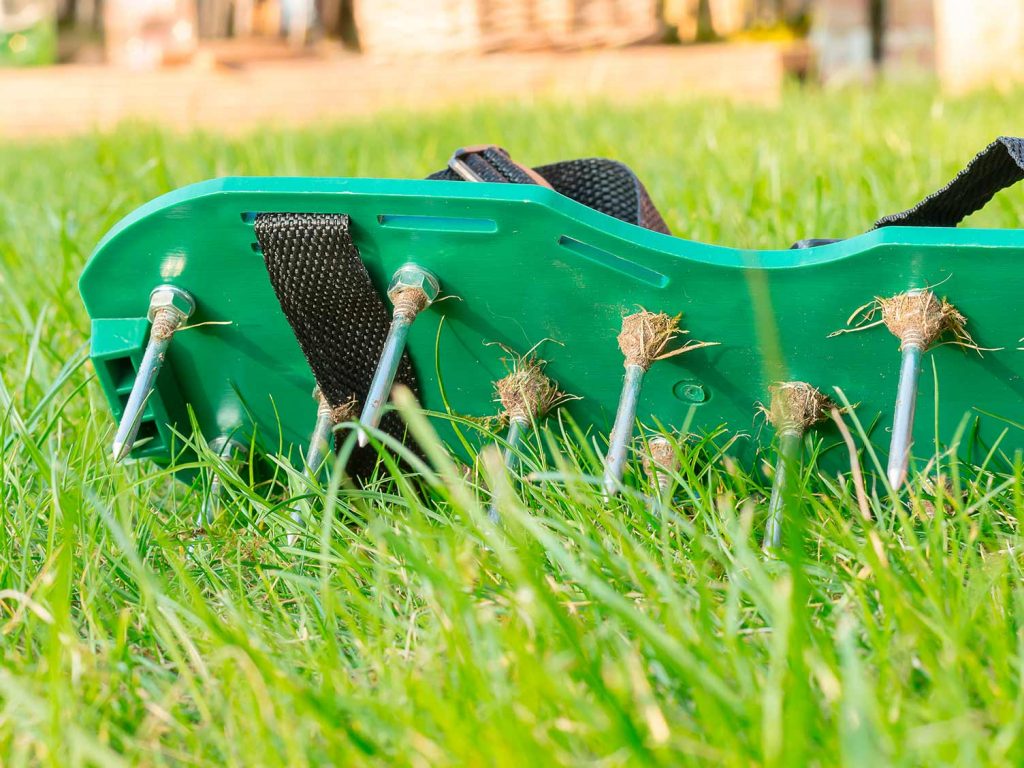
For most gardens this will only need to be done once every few years. Small patches of lawn can also be treated individually if required.
4. Over-seeding
Over-seeding rejuvenates tired and worn out lawns by covering the entire space with large quantities of seed mixed with fertiliser. This fills in damaged and thinning areas, whilst improving the colour and reducing the chance of weed and moss invasions.
Before the seeds can be applied the lawn will need to be scarified or aerated, mowed and well watered. Spreaders are available to buy to help get an even distribution of seeds.
Once seeded the lawn will need to be kept moist to encourage germination and a top dressing will need to be added to protect the seeds and provide nourishment.
This can be performed annually to maintain a healthy lawn.
5. Mowing and edging
When mowing your lawn it is best to only remove one third of the grasses length. How often you need to mow will depend on the time of year and current weather conditions.
When the weather is colder, especially during frost, the amount of mowing required will be reduced. Summer mowing becomes more frequent with the warmer weather as the grass will begin to grow quicker.
Avoid mowing when the soil or grass are wet as this can cause damage to the lawn and prevent healthy growth in the future. If you have a mower with a roller, the direction of mowing will need to be alternated each time.
Borders and edges can also be maintained and tidied using a half moon edging tool or edging shears after mowing.
6. Feeding and watering
There are a variety of grass feeds and fertilisers available from most gardening shops. The type required will depend on the existing soil and weather in your location. Most of these will have recommended instructions for application, so it is best to follow their guidelines for the product.
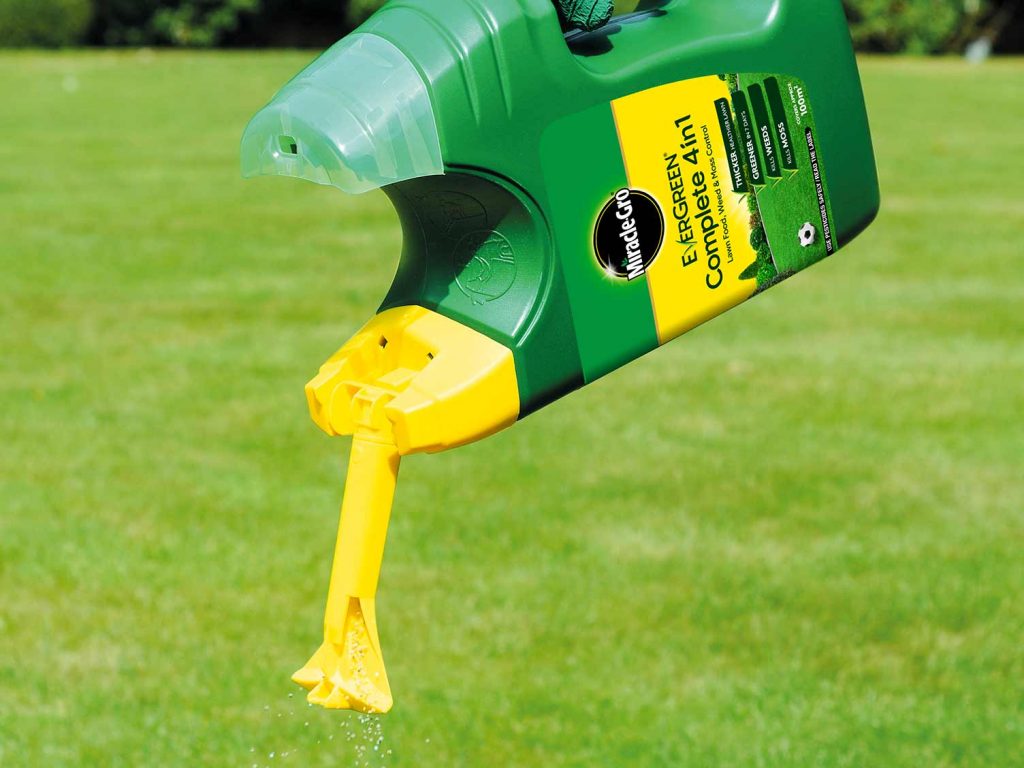
Generally it is advised to treat twice yearly, once in the spring with a nitrogen rich lawn feed and once in the autumn with a fertiliser with high levels of phosphate and potash.
Alongside feeding, watering is essential to all lawns. A lawn lacking water will start to change colour and loose its spring, causing the grass to stay flat if walked on.
The amount and frequency of watering will again depend on the type of soil and weather conditions in your location. as you also do not want to over water.
It is best to water the lawn at the beginning of the day in cooler temperatures to get better results.
7. Top dressing
This is used to build up and improve the quality of the existing soil, providing additional drought resistance and drainage, whilst evening out any imperfections.
As with all other maintenance the soil type for your garden will need to be checked in order to get the correct materials and consistency when creating your top dressing.
Using these top tips to regularly check and maintain your lawn along with removing any unwanted surface debris such as dead leaves and twigs, and cutting back any areas that create excess shade, will keep your lawn looking lush and healthy!
Post Credit to our helpful friends from www.lovethegarden.com

